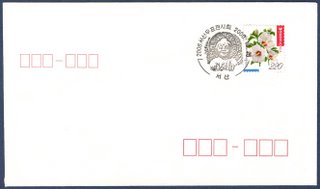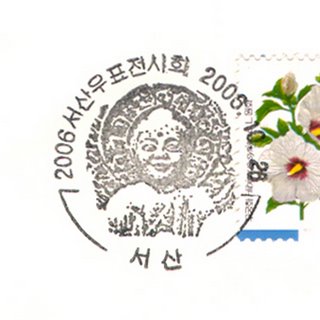Wednesday, April 25, 2018
Sunday, December 26, 2010
Wednesday, September 01, 2010
Saturday, April 03, 2010
Sunday, October 21, 2007
2007 SEOUL Philatelic Exhibition



Korean rulers held the sacrificial rite of Heaven, Wonguje, at Wongudan, which is also known as Wongudan Altar. The site was known by various other names, such as Hwangudan (圜丘壇), Jecheondan (祭天壇) or Wondan (圜壇). It is the Korean equivalent of the Chinese Temple of Heaven. Wongudan was designated as South Korea's Historic Site No. 157 on July 15, 1967.
The rite of Heaven has been performed since the days of the Three Kingdoms period. During the Goryeo Dynasty, King Seongjong was the first of the Goryeo kings to perform the rite of heaven. These rites were designed to ensure a bountiful harvest. King Seongjong standardized the Wonguje rituals. Sometime during the Goryeo Dynasty, the practice was abolished.
King Sejo of the Joseon Dynasty briefly restarted the rite to Heaven but stopped the practice in the tenth year of his reign in 1464 because only a Son of Heaven could perform the rite Joseon king deferred to the Chinese emperor.
The ritual was restarted again when King Gojong proclaimed the Korean Empire in 1897 and was subsequently abolished by the Japanese in 1910.
Wongudan was built in 1897. The site of the complex sat between Namsan and Bukhansan was considered highly auspicious by geomancers. The alter complex was also designed to mimic the natural elements like the sun and moon. It was a three-story altar made of granite and was used for animal sacrifice. The top center of the altar held a conical yellow-roofed building. The altar was destroyed by the Japanese in 1913. Today, the Hwanggungu (Yellow Palace Shrine), a the three-storied octagonal shrine built in 1899 remains along with three plaster drums with dragon decorations, and a gate. The Hwangungu, pictured above, was built on the north side of the altar complex was designed for the worshiping of the Heaven and respecting Taejo, the founder of the Joseon Dynasty. The Gocheonje ritual was revived in 2002 and will be performed annually as a revival of Korean cultural heritage.
The Japanese built the Railroad Chosun Hotel in the area where they had demolished Wongudan Altar. In 1968, that hotel was demolished and the Westin Chosun Hotel was built in its place. The Hwangungu still stands in the hotel complex today and although it is not a very well known tourist site, it is quite popular with the guests of the hotel.

















